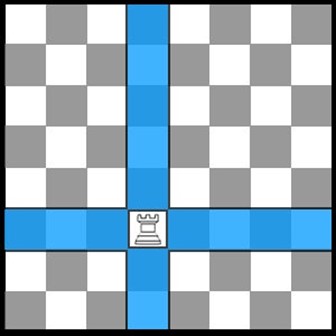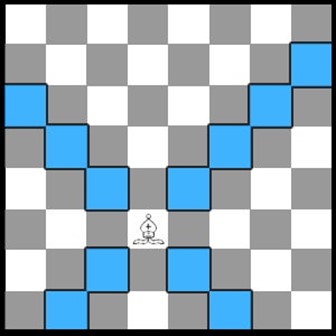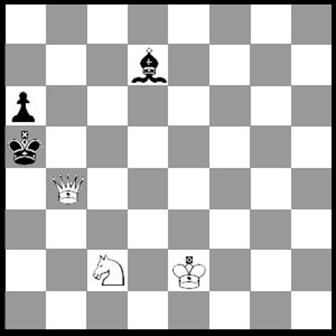Chess
Overview
Chess can be traced back over 1500 years and was a predecessor to a similar game from the 6th century AD. India. Later chess was adopted by the Persians and quickly spread from the Arab world to southern Europe. Today Chess remains a highly popular pastime and is played at least once a year by 15% of Americans. Chess is a great example of how all the resources make up a game system.
Players
2 players
Resources
- Chess board
- Chess Pieces [each player receives 8 pawns, 2 rooks, 2 knights, 2 bishops, 1 queen, and 1 king]
Goal/Objective
The goal of the game is to checkmate the opponent's king. This happens when the king is put into check and cannot get out of check.
Setup
The board is set up as shown (see below). There should always be a white square at the closest right-hand side for both players. Remember that the queen must be on a square that matches her color.

Game Mechanics
White always moves first, and players alternate turns. Players can only move one piece at a time, except when castling (explained later).
TAKING PIECES:
Players take pieces when they encounter an opponent in their movement path. Only pawns take differently than they move.
PAWN MOVEMENT
Pawns only move forward. On the first move, a pawn can move one or two spaces, every subsequent move can only be one space. Pawns move diagonally to take opponents.

Pawn Promotion:
If a pawn reaches the opposite side of the board, it is promoted to a higher piece (except the king). There is no limit to how many pawns can be promoted. explained later)
ROOK MOVEMENT
Rooks move in a continuous line forwards, backward and side-to-side.

KNIGHT MOVEMENT
Knights are the only pieces that "jump" off the board. Unlike other pieces, they are not blocked if there are pieces between them and their destination square.

To make it easier to remember how a knight moves think of an L. Two spaces in a direction forward, backward or side-to-side, and one space at a right turn.
BISHOP MOVEMENT
Bishops move in continuous diagonal lines in any direction.

QUEEN MOVEMENT
The queen moves in continuous diagonal and straight lines. Forward, backward and side-to-side.

KING MOVEMENT
The king can move in any direction, one square at a time. A king cannot move to a square that is under attack by the opponent.
Outcome
Putting an opponent's king in "checkmate" is the only way to win the game.

A king is in checkmate if it is in check, the opponent's piece that has the king in check cannot be captured, the check cannot be blocked, and the king cannot move to a square that is not under attack.